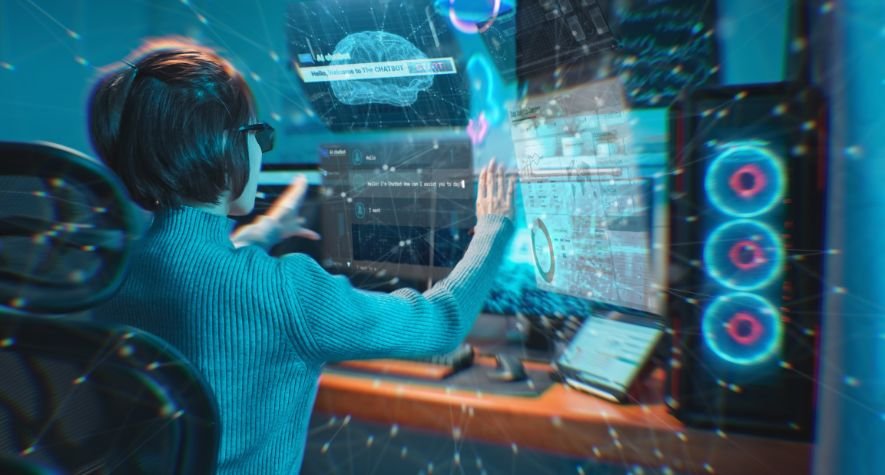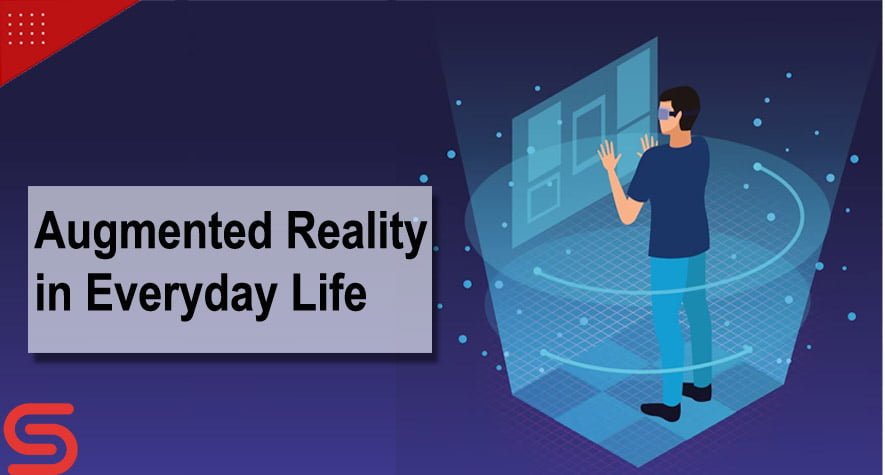The design and architectural sectors are drastically transformed by augmented reality, altering how professionals abstract, visualize, and explain their ideas to others. By covering virtual elements in the real world, AR is changing the entire design process, enhancing collaboration, and pushing the boundaries of creativity. Augmented reality refers to the combination of digital information with visuals and audio and environment through GPS data. Unlike Virtual Reality, which creates an immersive digital era, AR enhances our existing reality.
In this article, we’ll discuss the illustrations of augmented reality in everyday life.
Examples of Augmented Reality in everyday life
Augmented reality covers almost every aspect of our everyday life. Here are some examples of augmented reality in our everyday life.
Navigation And Tourism
Apps such as Google Maps and Apple Maps employ AR to overlay directions and information directly onto our physical environment, providing real-time guidance. Regular travelers, like drivers, may depend on built-in GPS or printed maps to guide them to their destinations. By utilizing specialized eyewear with sensors that can show an accurate path on the screen, automotive companies and manufacturers may now mix augmented reality into these navigation systems. AR tour guide apps augment travel experiences by providing historical, cultural, and interesting information about revolutions, enhancing visitors’ understanding and engagement.
Education System
A tool for visualizing augmented reality could be extremely helpful for visual learners. Where schools integrate augmented reality technology in the classroom, students may recall lesson content more readily, making learning a more enjoyable experience. AR applications in education enable interactive learning experiences, allowing students to visualize and explore complex concepts in subjects like science, history, and geography. AR language learning apps help improve pronunciation and vocabulary by covering virtual labels and translations of physical objects.
Shopping And Architecture
Virtual try-on applications enable shoppers to preview clothes, accessories, and even furniture in real time, enhancing the online shopping experience. AR-enabled tools facilitate designers, architects, and engineers to visualize and modify virtual models in real-world settings. This helps clients visualize building projects accurately. AR applications allow users to virtually place furniture, decor, and paint colors within their homes, helping in decision-making and visualization.
Museums And Music
AR allows visitors to experience interactive exhibits, bringing in-depth information, 3D models, and animations to life. With information and visuals, AR-guided tours improve visitors’ experiences while exploring tourist attractions. With an augmented reality application, music teachers may construct tutorials for musical instruments and show them to an audience. Furthermore, without the musicians themselves present, technology enables fans to see live performances of their favorite bands and artists. Since the performer might not require the audience to travel to the event’s venue, such technology can increase the accessibility of performances to audiences worldwide.
Healthcare

Surgeons could have 3D access to digital photos and important information within their field of view because of AR. Learning about the human body is helped through AR. In order to get a thorough understanding of anatomy, remote surgical procedures can be performed in augmented reality, particularly in training and medical education at universities. AR enables firefighters and first responders to receive real-time vital data, such as building layouts and hazardous materials information. Giving medical personnel the following opportunities enhances the accuracy of healthcare delivery and promotes safer healthcare services.
- Hands-free operation
- Watch training movies
- Use illustrations or instructions with notes
Fitness and Cosmetics
AR apps provide users with real-time data, exercise guidance, and form correction, enhancing workout routines and improving sports performance. AR-powered filters on platforms like Snapchat and Instagram allow users to modify and embellish their selfies with virtual objects and effects that can make them beautiful. Companies that sell cosmetics and accessories can employ augmented reality to assist customers in purchasing cosmetics before using them. For instance, a customer can try on an accessory to see whether it fits or use augmented reality software to try on makeup or lipstick. Additionally, suppliers can project goods onto clients’ heads in virtual reality, such as wigs.
Art And Real Estate
AR art installations and galleries allow artists to merge the digital and physical worlds, creating immersive and interactive experiences for viewers. AR-assisted assembly lines improve efficiency and accuracy by overlaying precise instructions and information onto workers’ fields of view. AR apps enable prospective buyers or renters to visualize properties virtually, providing an immersive experience before visiting in person.
Quick Summary
As AR technology advances, it will undoubtedly continue to shape our lives in countless innovative ways, providing limitless possibilities for future developments. AR has become an integral part of our modern world, from enhancing our navigation experiences and providing interactive education to revolutionizing shopping and improving healthcare. Augmented reality transforms the design and architecture industries by revolutionizing visualization, collaboration, and preservation. From immersive experiences and virtual furniture placement to interactive design reviews and sustainable analysis, AR enhances efficiency, accuracy, and creativity.

